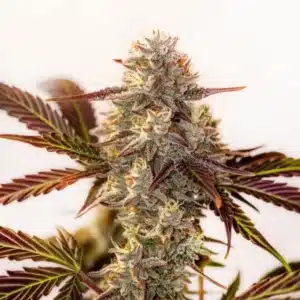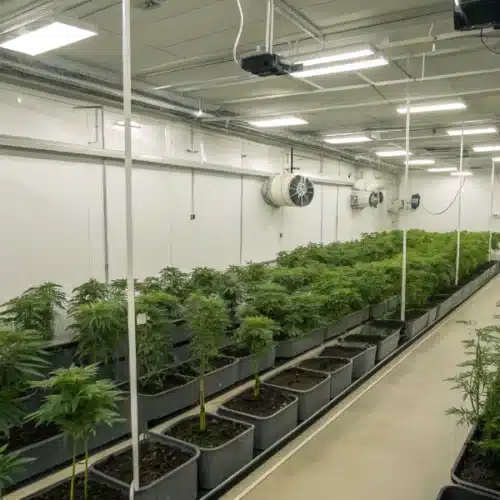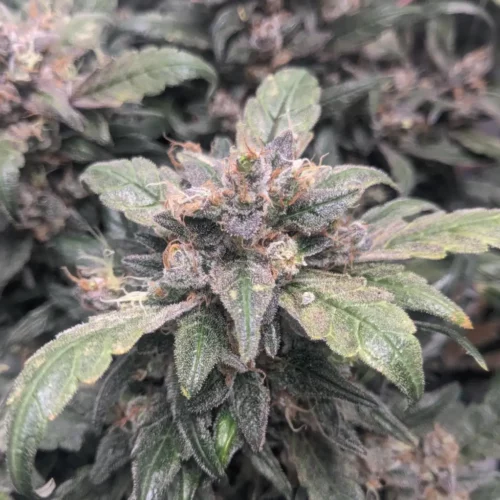Topping marijuana plants requires careful timing to avoid negative effects. Acting too soon can halt flowering and stunt growth, while waiting too long may hinder proper development. Knowing the growth stages of your weed plant is essential for navigating this critical process effectively.
What is and means Topping?
Topping cannabis is a popular cultivation method among growers aiming to promote a more compact plant structure and increase flowering sites. This technique entails pruning the uppermost growth of the main stem in the vegetative phase, redirecting the plant’s growth energy from upward growth to lateral expansion. This encourages the development of multiple flowering branches instead of a single dominant cola.
Promos & Deals
Why make topping to the cannabis plant?
When growers top cannabis plants, they employ a method that serves multiple purposes crucial for cultivation. Key reasons include managing space, redistributing hormones, and enhancing light utilization. This technique alters the plant’s natural growth pattern, promoting a more even canopy and improving light exposure for lower branches. By breaking apical dominance, topping redirects growth hormones across the plant, stimulating lateral branch development and increasing potential bud sites. This approach not only controls plant height, making it suitable for constrained grow spaces, but also boosts yield by encouraging bushier growth and maximizing photosynthesis efficiency through better light distribution.
The Best Time to Top Cannabis Plant
The best time to top weed plant varieties is crucially within the first 2-4 weeks of their vegetative growth phase. Missing this window means you’ll lose the chance to enhance your plant’s structure and yield, as once flowering begins, the plant prioritizes bud development. Recognizing and acting within this timeframe is key for successful cultivation.
On the other hand, some growers, when deciding when do you top weed plants, often consult a specific node number for guidance on where and when to perform this technique.
It’s generally recommended to exercise discretion based on the plant’s growth. Typically, growers suggest topping between the 5th and 7th nodes. However, the actual height of the plant at these nodes can vary, particularly between indica and sativa strains. Knowing your garden’s space limitations and the strain’s usual growth pattern will help you time the topping properly.
Some growers prefer to wait until the cannabis plant has further developed in the vegetative stage before topping. A well-established root system enables quicker recovery compared to topping a less rooted seedling. Pruning lower branches beforehand can also influence the number of nodal spaces left before topping.
In both approaches, it’s crucial to top only healthy plants, as this method can induce some stress. While the plant may experience mild shock, with robust genetics, topping should not lead to hermaphroditic traits. Topping remains the most commonly used technique for training cannabis plants.

Benefit of topping cannabis plant
We have already talked in this article in a superficial way about some benefits of making cannabis plants top. Now, we will look in more depth at the benefits of using these techniques with cannabis plants and why we recommend gardeners have this practice with their plants.
Enhance Branch Growth Topping weed plants redirects their growth energy, encouraging the development of more branches. This alteration in structure significantly increases potential flowering sites.
Boost Harvest Yield More branches mean more potential sites for flowering, resulting in a significantly higher yield at harvest time. Topping is a strategic method to increase yield, provided it is timed correctly, making it a key practice in my personal cultivation routine.
Enhance Light Distribution Topped marijuana plants develop a denser canopy, which improves the penetration of light to lower branches. This enhanced light distribution supports vigorous growth and the production of high-quality buds. This allows cannabis plants to utilize nutrients more efficiently, while directing their energy towards flowering and eventual harvesting.
Promote Airflow Topped plants not only look different but also breathe differently, as they open up pathways for improved oxygen circulation. This increased airflow minimizes the risk of mold or mildew, ensuring healthier plants and higher yields.
Balanced Growth Topping weed plants promotes a more balanced and manageable structure, especially advantageous in indoor growing settings. By trimming the main growth tip, the plant redirects its growth hormones to lower branches, resulting in a denser and more uniformly distributed canopy. This bushier profile facilitates improved light penetration throughout the plant, enhancing the development of all bud sites.
Control and Management Topping grants growers enhanced control over their cannabis plants, simplifying cultivation and management efforts. It effectively regulates vertical growth, crucial for indoor growers with limited overhead space. Maintaining a compact, bushy form optimizes use of grow space and promotes better air circulation, reducing risks associated with mold and mildew in humid conditions.
Best quality weed: Topping your weed plants can enhance cannabis quality by boosting potency and flavor. This method ensures all bud sites receive ample light, not just the top ones, resulting in more consistent and superior buds. It also fosters balanced growth and minimizes disease risks by improving air circulation, thereby promoting overall plant health.

Topping Cannabis Plant Step By Step Guide
At this point, we are going to delve into how to topping correctly so that your cannabis plants benefit from this technique. In this step by step you will have a brief guide that will guide you with everything you need to do to make a great topping.
Step 1: Find the Optimal Spot Start by locating the highest point of growth on the main stem, known as the topmost growth tip. Identify the node where new branches are beginning to form and aim to top just above this spot.
Step 2: Prepare and Sterilize Tools Properly preparing and sterilizing your tools is essential. Select sharp scissors or pruning shears and sanitize them with rubbing alcohol to prevent any potential infections.
Step 3: Make the Cut Execute a precise cut just above the identified node. Leave a small portion of the stem above the node to protect the new growth. Ensure a clean cut to avoid damaging the plant tissue.
Step 4: Monitor Your Weed Plant After topping, monitor your cannabis plant closely for signs of stress such as wilting or discoloration. Provide adequate water, nutrients, and light to support recovery and healthy growth.
By following these steps, you’ll effectively top your weed plants and promote vigorous new growth.
Difference between a topped and non topped weed plant
A cannabis plant that has been topped displays notable differences in structure, yield, and growth management compared to its non-topped counterparts. Topping involves removing the top growth tip, encouraging the development of a bushier form with multiple colas rather than a single main cola. This method fosters lateral growth, creating more bud sites and a broader canopy that enhances light penetration and air circulation. Consequently, topped cannabis plants typically yield more overall, with buds distributed evenly, which is advantageous in confined indoor grow spaces. This denser growth also mitigates the risk of mold and mildew by improving airflow among branches.
In contrast, a non-topped cannabis plant assumes a traditional Christmas tree shape, featuring a prominent main cola and fewer lower branches. Its vertical growth pattern directs energy towards developing a large central cola, resulting in fewer but potentially larger bud sites overall. This structure often restricts light exposure to lower branches, potentially affecting the quality and size of these buds.
Pros and Cons Topping
Pros of Topping Cannabis Plants: Topping enhances yield potential, promotes uniform canopy development, and boosts air circulation and light exposure. Additionally, it can enhance bud quality, increasing their potency.
Drawbacks of Topping Cannabis Plants: However, topping may delay flowering and stunt growth if not executed properly. It can also result in weaker branches and necessitate additional maintenance. Knowing when to top weed plants is crucial as improper timing or technique can stress cannabis plants and inhibit their growth potential.

Can I make Topping to Autoflowering Strain?
Whether or not to train and top autoflowering cannabis strains is a contentious issue among growers. Some advocate for these techniques, while others caution against them, believing they can lead to unfavorable outcomes. To grasp this debate, it’s essential to understand the genetic characteristics of autoflowering cannabis strains.
Autoflowers derive from Cannabis ruderalis, a unique cannabis variety that automatically flowers upon reaching maturity, unlike indica and sativa strains which rely on changes in light cycles. Despite the advantages conferred by the autoflowering trait of Cannabis ruderalis, there are also drawbacks to consider.
Training and topping introduce varying levels of stress to your plants, ranging from minimal to potentially significant. Unlike photoperiod strains where stress during vegetative growth can be mitigated by extending this phase, autoflowers lack this flexibility. This limitation explains why many growers avoid techniques such as training, topping, defoliation, or pruning with autoflowers. Some autoflowering strains may struggle to fully recover from these stresses, resulting in reduced yields of inferior quality.
At Blimburn Seeds we do not recommend topping autoflowering genetics because you may see a reduced harvest or even be left with dwarf plants that cannot withstand the stress caused by this cultivation technique.
What Made After Topping Cannabis Plants?
After pruning your cannabis plant, allow it several days to a week to recover from the shock before initiating flowering, since topping during flower can cause unnecessary stress and reduce yield. Ensure the plant receives adequate water and nutrients during this period. A robust cannabis plant can endure various training methods and stressors.
Implementing this simple plant training technique can lead to higher yields, enable cultivation of different strains in close proximity, and optimize your wattage efficiency. Topping is often used in conjunction with other techniques such as low-stress training (LST), which involves bending or securing branches to manage canopy growth and reduce apical dominance. “Mainlining,” a blend of topping and LST, is another effective cannabis training approach.
Our aim is to demystify these cultivation techniques and make them accessible to all gardeners. Stay tuned for upcoming articles on LST, supercropping, scrogging, and more. What techniques are you interested in learning more about?
















